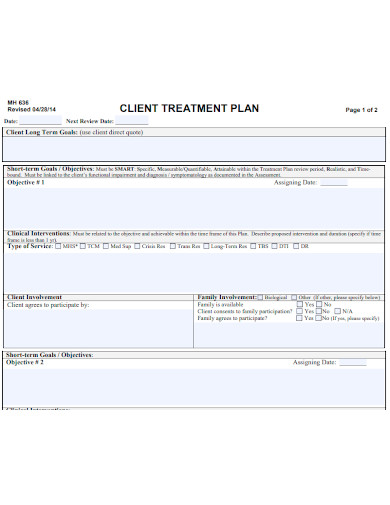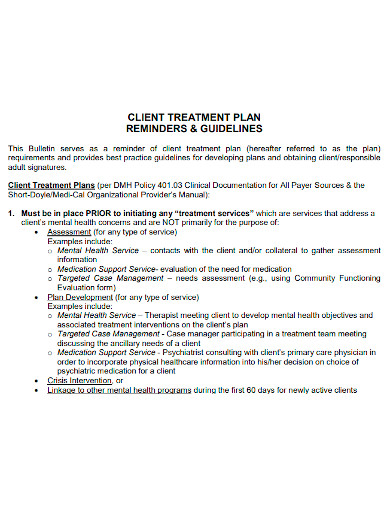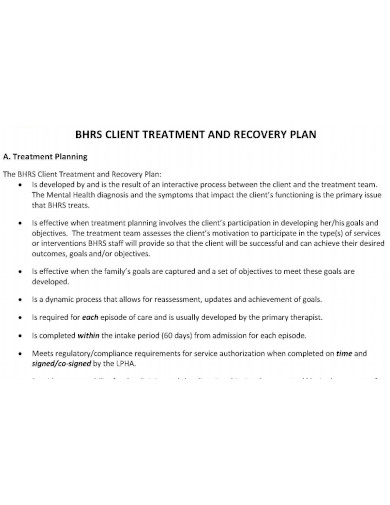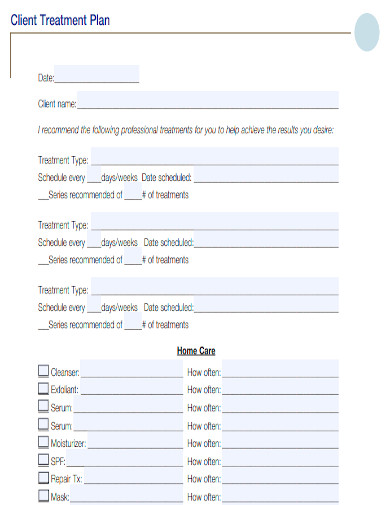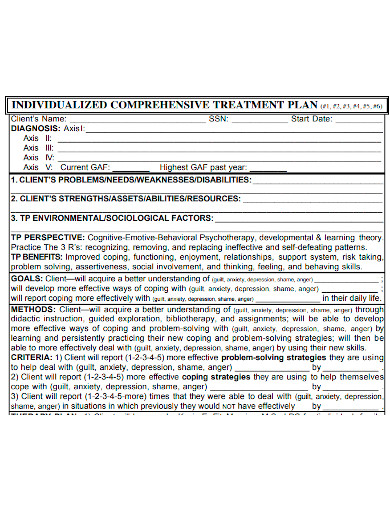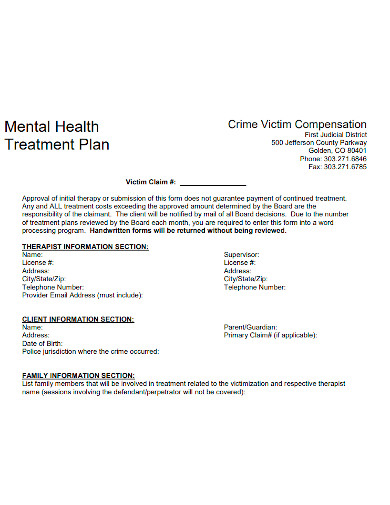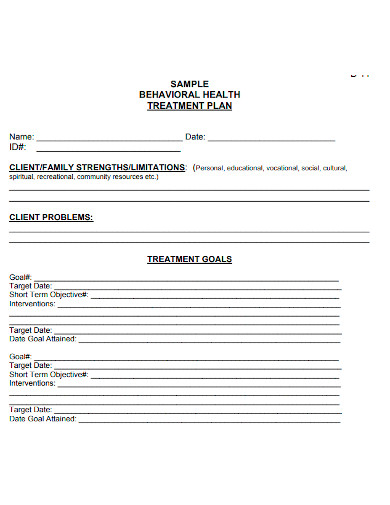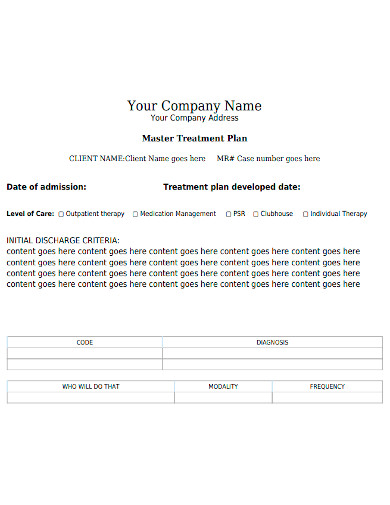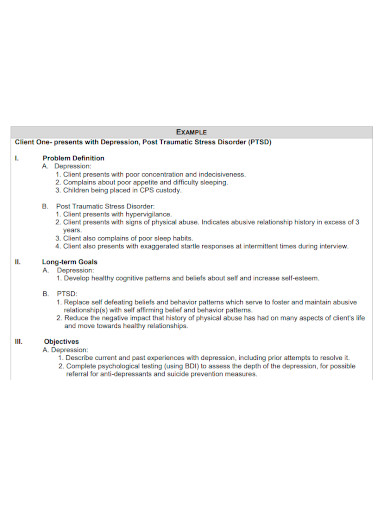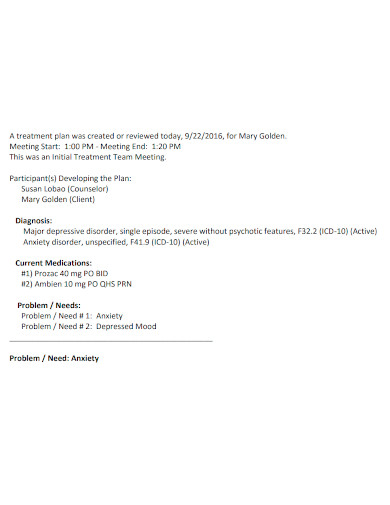Whenever we get treatment depending on the severity, may it be for a ailment or a mental health issue a health professional would always recommend a treatment plan. This is in order to outline a client or patient’s progress with a set of goals, plans and methods of therapy. In this article we shall learn more about Client Treatment Plan and how this document can help a patient progress to recovery. Also check out our free Client Treatment Plan Samples below:
9+ Client Treatment Plan Samples
1. Client Treatment Plan Samples
2. Formal Client Treatment Plan
3. Client Treatment and Recovery Plan
4. Client Treatment Plan Format
5. Client Comprehensive Treatment Plan
6. Client Mental Health Treatment Plan
7. Client Behavioral Treatment Plan
8. Professional Client Treatment Plan
9. Standard Client Treatment Plan
10. Editable Client Treatment Plan
What Is a Client Treatment Plan?
Health professionals use treatment planning as a tool to effectively treat patients. Without a clear plan in place, it can be hard to track progress, stay organized and keep a record of individual patient care. A Client Treatment Plan is a comprehensive program that is tailored to the individual patient and is a powerful tool for engaging the patient in their treatment. This documents important information and components regarding a patient’s issue.
How to Write a Client Treatment Plan?
A majority of treatment plans are catered but not limited to those afflicted with mental health issues. While people in similar circumstances with similar issues may have similar treatment plans, it’s important to understand that each treatment plan is unique as this a client’s condition would always matter in the first place. There are often many different ways to treat the same problem, thus a number of treatment plans are unique. Treatment plans is a continuing process and with the right contents this can guide you to creating an effective treatment plan. Let us go over the basic components of what makes a client treatment plan:
I. Client Information
A health profession will fill up basic information such as the patient’s name, social security number, insurance details, date of the plan, psychological history and demographics.
II. Diagnosis Summary
Based on the evaluation and assessment done by a health professional, jot down the patient’s diagnosis and the duration of the diagnosis of the current health problem.
III. Defining the Problems and Goals
With the diagnosis on hand, determine the underlying problems and issues being faced by the patient note what should be addressed to and align these to specific treatment goals and measurable objectives. You can use the SMART goals for guidance. SMART stands for Specific, Measurable, Attainable, Relevant and Time-Bound.
IV. Timeline of Treatment
Each treatment should have a specific timeframe to ensure that the goals are effectively met and objectives are completed. Some service regulations require treatment plans be reviewed every 30 days, while others, like mental health outpatient care, may only require updates every 100 days or so.
V. Monitor Progress
To evaluate the effectiveness of the treatment plan, you need to keep an update of the patient’s progress. Ask the patient to count and keep track of their thoughts, feelings and behaviors in a log so you can monitor their progress.
FAQs
What Is a Wellness Recovery Action Plan?
A Wellness Action Plan is a tool directed to anyone who wishes to live a well and healthy life. Something you create for yourself to take control over various aspects of your health.
What Is Counselling?
Counselling is a process which a trained counselor helps an individual to find ways to work through and understand their problems. By utilizing psychological methods especially in collecting case history data, using various techniques of the personal interview, and testing interests and aptitudes.
What Is a Medical Diagnosis?
A Medical Diagnosis is a intricate medical procedure involving patient history, personal exams, and testing. In many cases, there are multiple diagnoses completed by varying doctors. This process allows for a more comprehensive understanding of patient ailments. Diagnosis has important implications for patient care, research, and policy.
When you are ill or unwell, treatment plans are the best option to help you to the road of recovery. It may not be a swift process depending on your diagnosis but it gets you there. It helps to think that there are people who are willing to assist you and take time to monitor your progress. This would help not only in the healing process and it would give the much needed support of ailing patients.
Related Posts
FREE 10+ Mental Health Discharge Summary Samples
FREE 10+ Massage Therapy Business Plan Templates
FREE 9+ Sample Progress Note Templates
FREE 8+ Consultant Business Plan Samples
FREE 7+ Introduction Letter to Clients Samples and Templates
FREE 7+ Sample Appointment Slip Templates
FREE 6+ Case Manager Cover Letter Templates
FREE 6+ Client Satisfaction Survey Samples
FREE 5+ Nursing Discharge Summary Samples
FREE 43+ Sample Plan Templates
FREE 12+ Sample Care Plan Templates
FREE 10+ Sample Health Plan Templates
FREE 10+ Sample Nursing Care Plan Templates
FREE 9+ Service Quotation Samples
FREE 7+ Nursing Report Samples

